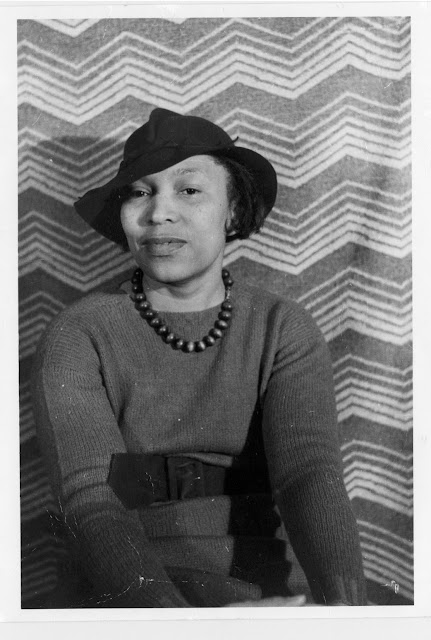Zora Neale Hurston, Barracoon:
The Story of the Last “Black Cargo.” (Amistad, 2018).
Zora Neale Hurston is known for her award-winning fiction
and poetry, but her latest book is a precious gem of nonfiction. She was one of the stand-out writers of the Harlem Renaissance, and she informed her stories and poems with astute observations of the people and cultures about which she
wrote. She frequently set her stories in northern Florida where she grew up and transcribed her characters' speech to represent how they actually spoke. (This was innovative then, but we see it often now.) A trained
cultural anthropologist, Hurston traveled in 1927 to Plateau, Alabama, near where she was born, to
interview Cudjo Lewis.
Cudjo Lewis was the last survivor of the illegal slave trade. He arrived in Alabama aboard the Clotilda in 1860. Hurston tells two stories about Lewis in this important
book. First, there’s Cudjo Lewis as an old man of 86, not sure he should trust
Hurston, and not always forthcoming about his history. She visits him
frequently, observing his daily routine, and her persistence pays off. He becomes somewhat comfortable with her, at least most days. The second thread winding through this book is Lewis’s personal tale of the slave traders violently capturing him (then known as Kossola) and some other people from his village and then the Middle Passage, their journey to the United States. His ship, the Clotilda, was the last slave
ship out of Africa to cross the Atlantic Ocean. He and his countrymen were considered
“cargo” and he remembers the awful experience clearly. Both stories, 1927 Cudjo and 1860 Kossola, are
illuminating, gripping, and long overdue, appearing 91 years after Hurston’s
interviews.
 |
| Zora Neale Hurston, Photographed by Carl Van Vechten, around the time she was working on Barracoon |
